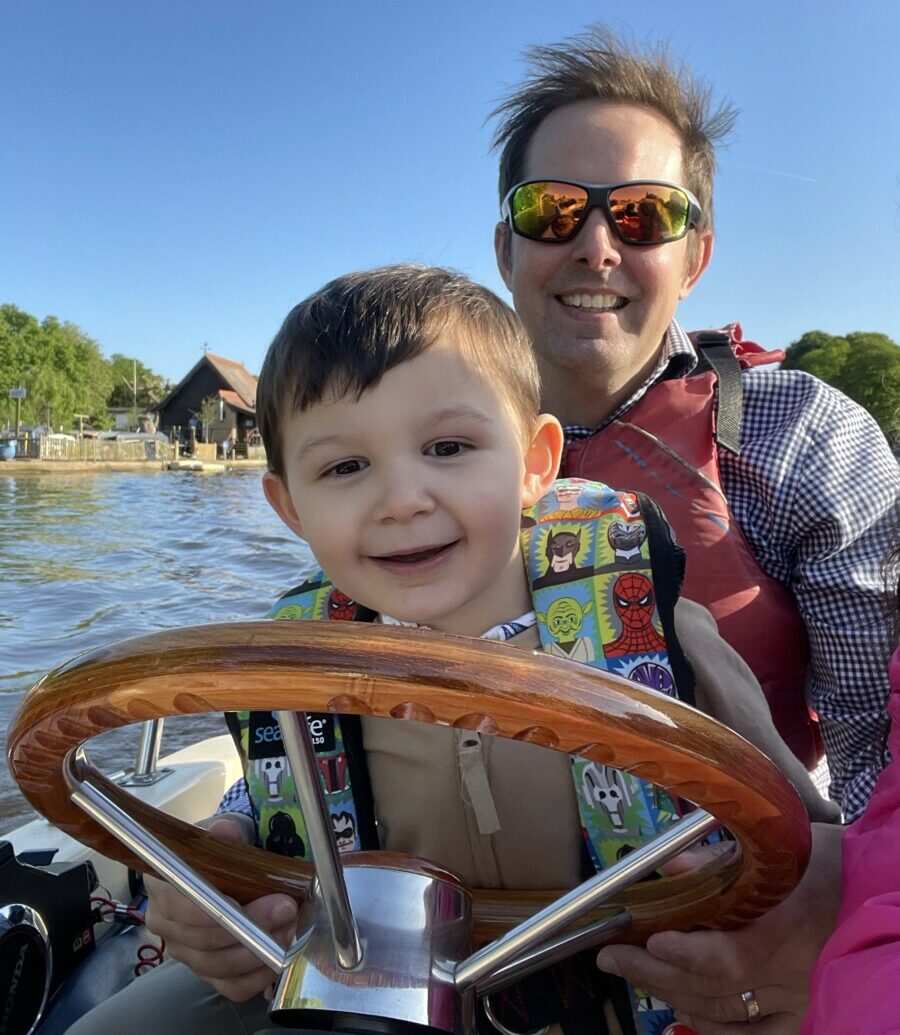Step 4 of the SOLVE IT Method: Visualise Your Path to Success
You’ve already taken powerful steps toward creating a meaningful and aligned life. By defining your situation, exploring options, and addressing limitations, you’ve laid the groundwork. Now, it’s time to embrace Step 4: Visualise. This stage is all about imagining the life you desire and vividly mapping out how each potential option might unfold. The clearer your vision, the more powerfully you can move toward your goals.
Why Visualisation Matters
Visualisation isn’t just daydreaming. It’s a deliberate, evidence-backed practice that primes your brain to recognise opportunities, stay motivated, and take actionable steps toward success. Neuroscience reveals that visualisation activates the same neural pathways as actual experience, making your brain more efficient at turning visions into reality.
The Neuroscience of Visualisation
- Mental Rehearsal and the Brain
- When you vividly imagine achieving a goal, your brain engages the same neural circuits involved in physically executing that action. This is called “mental rehearsal.”
- Studies using functional MRI (fMRI) show that visualising success strengthens the brain’s motor cortex and reward pathways, creating a feedback loop that reinforces positive action.
- The Reticular Activating System (RAS)
- The RAS is a network in your brain that filters information, spotlighting what aligns with your goals.
- By regularly visualising your desired outcomes, you teach your RAS to prioritise opportunities and solutions that help you move closer to your vision.
- Neuroplasticity and Goal Achievement
- Repeated visualisation rewires the brain, replacing limiting beliefs with confidence and clarity. As these new neural pathways form, you feel more capable of achieving what you’ve envisioned.
Visualisation Techniques to Empower Your Journey
Now that you understand the science, let’s dive into practical tools that make visualisation a transformative part of your decision-making process.
1. Journaling for Clarity
Journaling helps you articulate and refine your visions, turning abstract dreams into actionable insights.
How to Start:
- Begin with a prompt: What does my ideal life look like if I choose this path?
- Write in detail, using sensory language: What do you see, hear, smell, or feel in this future?
- Reflect on the emotions this vision evokes. Is it excitement, peace, or pride?
Action Step:
Spend 10 minutes each morning journaling about a specific goal or option. This regular practice strengthens your mental focus and aligns your thoughts with your intentions.
2. Vision Boards
Vision boards are visual representations of your goals. They act as daily reminders of what you’re striving for, helping you stay connected to your purpose.
How to Create a Vision Board:
- Collect images, quotes, and affirmations that resonate with your desired outcomes.
- Organise them on a board (physical or digital). Group similar themes together, such as career, relationships, or health.
- Place your vision board somewhere visible to keep your goals front of mind.
The Science Behind It:
- Vision boards engage your visual cortex, strengthening your brain’s association between your goals and your actions.
- Repeated exposure to these images activates the brain’s reward system, reinforcing motivation.
3. Vision Journals
If journaling and vision boards had a hybrid, it would be the vision journal—a dynamic, ongoing tool that combines visualisation with written reflection.
Steps to Create a Vision Journal:
- Use a notebook or digital app to create sections for different life goals (e.g., career, relationships, personal growth).
- Add drawings, clippings, affirmations, and written entries that bring each goal to life.
- Regularly update your journal with new insights, ideas, and progress.
Why It Works:
- Vision journals bridge the gap between imagination and action, keeping your goals fluid and adaptable.
- Revisiting your journal reinforces neural pathways, ensuring your brain remains engaged with your vision.
4. Manifesting and the Law of Attraction
The Law of Attraction suggests that focusing on positive outcomes can draw those outcomes to you. While often misunderstood as passive wishful thinking, manifestation works best when paired with purposeful action.
How to Manifest Effectively:
- Clarify Your Intentions: Be specific about what you want. Vague goals lead to vague outcomes.
- Visualise Daily: Spend a few minutes each morning and evening imagining your ideal life.
- Embody the Energy: Act as though your goal is already achieved. For instance, if you want to be a confident speaker, carry yourself with confidence now.
- Take Aligned Action: The universe responds to effort. Each step you take signals your commitment to your vision.
The Role of Gratitude:
Gratitude amplifies manifestation by reinforcing a mindset of abundance. Regularly reflecting on what you’re grateful for shifts your focus from scarcity to possibility.
Action Steps to Start Visualising Today
- Choose an Option to Focus On: Select one potential path and imagine living it fully.
- Use Multi-Sensory Detail: Include sights, sounds, smells, and emotions to make the vision vivid.
- Document Your Vision: Use a journal, vision board, or both to capture and refine your goals.
- Set a Daily Practice: Dedicate 5–10 minutes each day to visualisation exercises.
- Align Your Environment: Surround yourself with cues that support your vision, from inspiring books to like-minded communities.
Case Study 1: Using a Vision Board to Transform a Career Path
Background:
Sarah, a mid-level manager in a corporate job, felt unfulfilled and longed to transition into a more creative role. Despite having a passion for design, she doubted whether she could make the leap due to financial concerns and fear of failure.
Steps Taken:
- Clarified Her Vision: Sarah created a vision board with images of designers at work, creative studio spaces, and quotes about courage and growth.
- Daily Visualisation Practice: Each morning, she spent 5 minutes looking at her vision board and imagining herself thriving as a designer.
- Aligned Actions: She began taking small steps, such as enrolling in a part-time design course and networking with industry professionals.
Outcome:
Over six months, Sarah’s mindset shifted from doubt to confidence. Her vision board served as a daily motivator, reinforcing her belief that she could succeed. She eventually secured a junior design role at a boutique agency, aligning her career with her passion.
Takeaway:
By combining visualisation with intentional actions, Sarah broke through her limiting beliefs and created a path toward her dream career.
Case Study 2: Manifesting Personal Growth Through Vision Journaling
Background:
James, a university student, struggled with imposter syndrome. Despite excelling academically, he constantly doubted his abilities and avoided applying for leadership opportunities.
Steps Taken:
- Started a Vision Journal: James began by writing entries as if his goals were already achieved. For example, “I am confident and respected as a student leader.”
- Engaged in Reframe Exercises: Each time he wrote down a limiting belief, he countered it with evidence from past successes, shifting his mindset.
- Incorporated Visual Elements: He added sketches of a confident version of himself, motivational quotes, and photos of mentors he admired.
Outcome:
Within four months, James applied for and was elected to a student leadership role. His vision journal helped him visualise success and maintain focus, even when self-doubt resurfaced.
Takeaway:
Vision journaling gave James a tangible way to connect with his goals, reframe doubts, and take courageous steps toward personal growth.
Case Study 3: A Parent Manifesting Balance and Joy in Family Life
Background:
Emma, a working mother of two young children, felt overwhelmed by the competing demands of her career and family life. She often found herself reacting to situations rather than living intentionally, leaving her exhausted and disconnected from her long-term vision for her family.
Steps Taken:
- Clarified Her Ideal Life:
Emma used a vision journal to map out what a balanced and joyful family life would look like. She wrote vivid descriptions of peaceful mornings, quality time with her children, and a fulfilling work-life balance. - Created a Vision Board:
She included images of happy family moments, serene home environments, and affirmations like “I am present for my family and thriving in my career.” - Daily Visualisation Practice:
Each evening, Emma spent 10 minutes reviewing her vision board and journaling about how she took small steps toward her ideal day. She would reflect on moments where she aligned with her vision and reframe moments where she felt out of sync. - Actionable Steps:
- She set boundaries at work to leave on time three days a week.
- Scheduled weekly “family fun nights” to create consistent connection.
- Began a mindfulness practice to stay calm and present during challenging moments.
Outcome:
Within three months, Emma noticed a significant shift in her family dynamic. Her children became more cooperative, sensing her calm and intentional presence. She also gained clarity in her work decisions, feeling less stressed about balancing both roles.
Neuroscience Insight:
Emma’s visualisation and journaling practices engaged her brain’s prefrontal cortex, responsible for goal-setting and emotional regulation. By focusing on positive outcomes, she activated the brain’s reward system, reinforcing her commitment to new habits.
Takeaway:
Through consistent visualisation and intentional actions, Emma transformed her sense of overwhelm into a renewed focus on her values. This not only improved her family life but also gave her the confidence to prioritise her well-being.
The Flow to Step 5: Execute
Visualisation is the bridge between imagination and action. It’s not enough to dream—you must act. Once your vision is clear, Step 5 focuses on executing your plan with purpose and precision. This involves creating actionable steps, tracking progress, and overcoming challenges as they arise.
Need Support? Let’s Make It Happen
Feeling stuck? Unsure how to turn your vision into reality? Working with a coach can fast-track your decision-making process and bring clarity to your next steps. Whether you’re seeking deeper insights or practical tools to move forward, personalised coaching provides the support you need.
Book a coaching session today and take the first step toward transforming your vision into action. Together, we’ll break through barriers, refine your goals, and create a life that aligns with your highest potential.
















